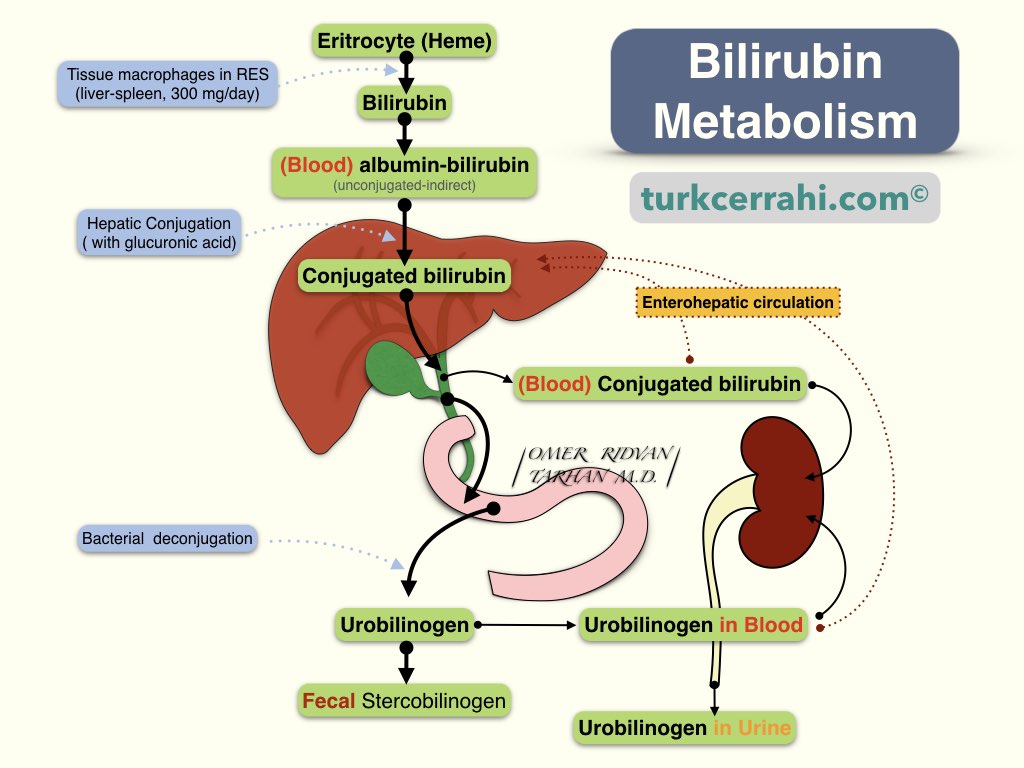Direct Bilirubin
Direct bilirubin is water-soluble bilirubin. Indirect bilirubin, which is formed during the breakdown of erythrocytes (red blood cells), is transported to the liver bound to albumin. In the liver, it is conjugated with glucuronic acid to form water-soluble direct bilirubin.

The conjugated bilirubin level is “directly” measured using the Van den Bergh test.
In order to measure total bilirubin, serum is first mixed with alcohol to release unconjugated bilirubin bound to albumin. In this case, when the Van de Bergh Test is applied, total bilirubin is measured.
The difference between the two measurements provides the value of indirect (unconjugated) bilirubin. In other words, indirect bilirubin is indirectly measured via calculation.
Liver cells excrete direct bilirubin into bile, which then flows into the small intestine and is eliminated from the body via feces. Biliary tract obstruction causes direct bilirubin accumulation in the liver and bloodstream, leading to an increase in direct bilirubin levels. This results in jaundice, a condition characterized by yellowing of the skin and sclera, as well as pale-colored stools due to decreased bile flow into the intestine and tea-colored urine due to increased bilirubin excretion into the urine.
In laboratories, total bilirubin (N=0.3-1.2 mg/dL) and direct bilirubin (N=0-0.2 mg/dL) are measured. The difference between the two values is calculated as indirect bilirubin.